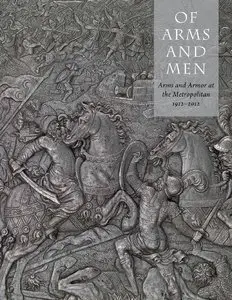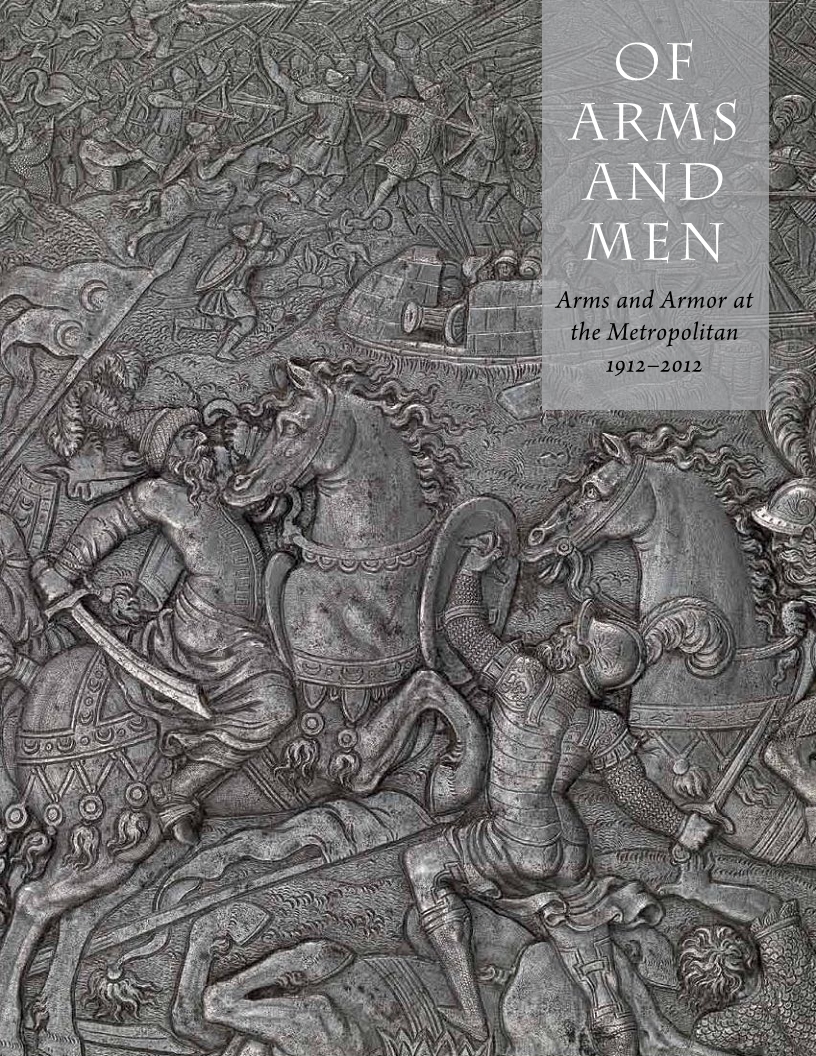Stuart W. Pyhrr, "Of Arms and Men: Arms and Armor at the Metropolitan 1912-2012"
Publisher: The Metropolitan Museum of Art | 2012 | ISBN: 1588394832 | English | PDF | 50 pages | 32.87 Mb
Publisher: The Metropolitan Museum of Art | 2012 | ISBN: 1588394832 | English | PDF | 50 pages | 32.87 Mb
Arms and armor have played a vital role in every culture, from the ancient world to the modern one, not only in a military context but also in civilian life, notably in the hunt, sport, self-defense, and ceremony. Weapons remain time-honored symbols of power and authority, and in the past a warrior's armor, custom-fitted and decorated in the most sophisticated and up-to-date fashion, became a highly visible symbol of rank, wealth, and taste. Even in the late Baroque age, when armor had all but disappeared from the battlefield, European noblemen continued to be depicted in their formal portraits wearing armor to suggest their martial prowess and their place in the long-cherished, if waning, tradition of chivalry. The same was true in Japan. In the Edo period (1615–1868), when peace prevailed for more than two centuries, the samurai ordered traditional armor and weapons made by the best craftsmen to wear at court and in sport as a way of preserving their centuries-old warrior culture. Given the practical and symbolic importance of arms and armor, it is not surprising that the finest examples represent the highest artistic achievement and technical capabilities of their age.
Arms and armor have been an integral part of the Metropolitan's collection since the end of the nineteenth century, and they remain one of our most impressive and popular displays. Numbering today more than 14,000 objects, the Museum's holdings approach encyclopedic scope, encompassing examples from Europe, North America, Asia, and the Middle East and covering a period of 1,500 years, from about A.D. 400 to 1900. (Armor and weapons from the ancient world are housed in the departments of Egyptian Art, Greek and Roman Art, and Ancient Near Eastern Art.) The collection is overseen by the Department of Arms and Armor, the only specialized curatorial department of its kind in an American museum and one of the few in the world. This autumn the department celebrates its centennial, a historic moment that provides the occasion for this Bulletin, which tells the story of the creation and growth of the department and the acquisition of stellar objects of artistic merit and historical importance.
When the Department of Arms and Armor was created by the Museum's Trustees on October 28, 1912, it was due mainly to the talent, scholarship, and tireless drive of Dr. Bashford Dean. Between 1904 and 1912 Dean progressed from guest curator, to honorary curator, to head of the newly created department, and by the time of his premature death in 1928 he had built the Museum's collection into one of international importance. In the process he designed helmets and body armor for U.S. troops in World War I, fostered an influential group of private collectors, established American scholarship on historical arms and armor, and laid the foundation for what is today one of the most comprehensive assemblages of arms and armor in the world. Also to celebrate its centennial, the department has organized "Bashford Dean and the Creation of the Arms and Armor Department," a yearlong exhibition opening in October 2012 that will survey Dean's groundbreaking work. Of Arms and Men provides an opportunity to look more deeply at one of the Metropolitan's oldest and most distinctive departments.
Stuart W. Pyhrr is Arthur Ochs Sulzberger Curator in Charge of Arms and Armor, The Metropolitan Museum of Art.





